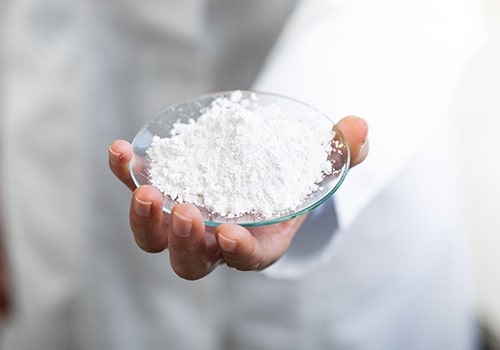The Active Pharmaceutical Ingredient (API) Market is anticipated to grow significantly, expanding from USD 216,510 million in 2024 to approximately USD 378,167.7 million by 2032, with a CAGR of 7.22% over the forecast period. The Active Pharmaceutical Ingredient (API) market serves as the backbone of the pharmaceutical industry, enabling the production of life-saving drugs and treatments. APIs are the biologically active components of medicines, directly responsible for their therapeutic effects. As the demand for innovative treatments and generic medications rises globally, the API market continues to expand, driven by technological advancements, regulatory changes, and evolving healthcare needs.
Browse the full report https://www.credenceresearch.com/report/active-pharmaceutical-ingredient-market
Market Overview
The global API market has witnessed significant growth in recent years, fueled by the increasing prevalence of chronic and infectious diseases, rising healthcare expenditures, and the aging population. In 2023, the market size was estimated at around $200 billion and is expected to grow at a compound annual growth rate (CAGR) of approximately 6.5% between 2024 and 2030.
The API market can be broadly classified into two categories:
1. Synthetic APIs: Derived through chemical synthesis, these APIs dominate the market due to their cost-effectiveness and scalability.
2. Biotech APIs: Also known as biologics, these are produced using biotechnology and include monoclonal antibodies, vaccines, and recombinant proteins. This segment is experiencing rapid growth due to advancements in biotechnology and the rise of personalized medicine.
Key Drivers of Growth
1. Rising Demand for Generic Drugs
Patent expirations of blockbuster drugs have opened avenues for generic drug manufacturers. Generics require APIs to replicate the therapeutic effects of branded drugs, fueling demand for cost-efficient API production.
2. Increasing Prevalence of Chronic Diseases
The surge in conditions like diabetes, cancer, and cardiovascular diseases has heightened the demand for specialized APIs, particularly biotech APIs, which are essential for targeted therapies.
3. Outsourcing of API Manufacturing
Pharmaceutical companies are increasingly outsourcing API production to third-party manufacturers, particularly in countries like India and China, where production costs are lower. This trend enhances supply chain efficiency and reduces costs for pharmaceutical companies.
4. Technological Advancements
Innovations in API production, such as continuous manufacturing, green chemistry, and flow chemistry, have streamlined processes, reduced environmental impact, and improved API purity levels.
Challenges in the API Market
1. Stringent Regulatory Requirements
API manufacturers must comply with rigorous regulatory standards set by agencies like the FDA, EMA, and WHO. Ensuring adherence to Good Manufacturing Practices (GMP) can be costly and time-consuming.
2. Supply Chain Disruptions
The COVID-19 pandemic exposed vulnerabilities in the global API supply chain, particularly the over-reliance on specific regions like China and India. Diversifying supply sources remains a challenge for many companies.
3. High R&D Costs
Developing new APIs, especially biotech APIs, involves substantial investment in research and development. Small and medium-sized enterprises often struggle to secure funding for these activities.
Future Trends
1. Adoption of Sustainable Practices: The shift towards green chemistry and environmentally friendly production methods will shape the API industry in the coming years.
2. Increased Biotech API Production: As personalized medicine gains traction, the demand for biotech APIs will continue to rise, spurring innovations in biotechnology.
3. Onshoring of API Manufacturing: To mitigate supply chain risks, many countries are incentivizing domestic API production, reducing reliance on imports.
4. Digitalization: The integration of AI, IoT, and data analytics into API production processes will enhance efficiency, reduce costs, and improve quality assurance.
Key Player Analysis:
- Teva Pharmaceutical Industries Ltd.
- Pfizer Inc.
- Novartis International AG
- Sun Pharmaceutical Industries Ltd.
- Boehringer Ingelheim GmbH
- Merck & Co., Inc.
- Aurobindo Pharma
- Sanofi S.A.
- BASF SE
- Mylan N.V.
Segmentations:
By Business Mode:
- Captive API
- Merchant API
By Synthesis Type:
- Synthetic
- Biotech
By Application:
- Cardiology
- Pulmonology
- Oncology
- Ophthalmology
- Neurology
- Orthopaedic
- Other
By Region:
- North America
- U.S.
- Canada
- Mexico
- Europe
- Germany
- France
- U.K.
- Italy
- Spain
- Rest of Europe
- Asia Pacific
- China
- Japan
- India
- South Korea
- South-east Asia
- Rest of Asia Pacific
- Latin America
- Brazil
- Argentina
- Rest of Latin America
- Middle East & Africa
- GCC Countries
- South Africa
- Rest of the Middle East and Africa
Browse the full report https://www.credenceresearch.com/report/active-pharmaceutical-ingredient-market
Contact:
Credence Research
Please contact us at +91 6232 49 3207
Email: sales@credenceresearch.com
Website: www.credenceresearch.com

Leave a Reply
You must be logged in to post a comment.